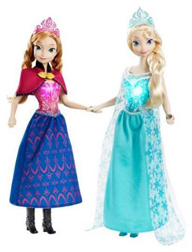 A real-life sibling rivalry exists between Disney’s Frozen Elsa and Anna products—with one sister clearly winning. According to a Wall Street Journal article published last month, Disney marketing executives expected the sisters to be equals in popularity. As such, they were caught off-guard by the overwhelming preference for Elsa, who outsells Anna in dolls, toys, costumes, and other items. Disney, in response, makes sure to keep Elsa items in-stock at stores: For example, about 10 percent more Elsa dolls are stocked than Anna ones at Wal-Mart, according to the same Wall Street Journal article.
A real-life sibling rivalry exists between Disney’s Frozen Elsa and Anna products—with one sister clearly winning. According to a Wall Street Journal article published last month, Disney marketing executives expected the sisters to be equals in popularity. As such, they were caught off-guard by the overwhelming preference for Elsa, who outsells Anna in dolls, toys, costumes, and other items. Disney, in response, makes sure to keep Elsa items in-stock at stores: For example, about 10 percent more Elsa dolls are stocked than Anna ones at Wal-Mart, according to the same Wall Street Journal article.
To help combat the Frozen sibling rivalry, companies are selling dolls with both sisters, and sales data from last holiday season shows that girls want to play with dolls or role-play with costumes featuring both characters. In turn, companies such as Jakks Pacific, as well as retailers like Toys “R” Us, are making and selling products, respectively, that involve the two sisters.
Sibling rivalries in toys, just like in real life, happen unintentionally. At the same time, the same thing has occurred with other popular toy brands and companies over the years, with the products of the older siblings largely dominating those of the younger ones. For example, the video game industry’s favorite Italian plumbers, Mario and Luigi, have a long-running sibling rivalry, which has apparently been among Nintendo’s best-kept secrets. Luigi, who dons a signature green outfit, appeared two years after his brother, Mario, who wears red, during the 1980s. Luigi appears in almost every game Mario has been in, but has always been a supporting character or teammate. Clearly, Nintendo thought that Luigi was a little green with envy, so it developed the Month of Luigi, which turned into a year beginning on February 18, 2013.
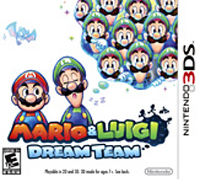 During this time, Nintendo celebrated with the release of titles such as Luigi’s Mansion: Dark Moon, Mario & Luigi: Dream Team, and New Super Luigi U. In addition, exclusive Luigi-related merchandise was made available to Club Nintendo members throughout the world. The Year of Luigi was ultimately extended to March 18 of this past year, so Nintendo’s goal of getting Luigi some much-deserved lovin’ was well realized.
During this time, Nintendo celebrated with the release of titles such as Luigi’s Mansion: Dark Moon, Mario & Luigi: Dream Team, and New Super Luigi U. In addition, exclusive Luigi-related merchandise was made available to Club Nintendo members throughout the world. The Year of Luigi was ultimately extended to March 18 of this past year, so Nintendo’s goal of getting Luigi some much-deserved lovin’ was well realized.
Meanwhile, one of the oldest and most beloved toy brands has also experienced its fair share of sibling rivalry. Skipper, the younger sister to Barbie, came out in 1964, five years after the original Mattel doll. Skipper was intended to be a more wholesome version of her older sister—less controversial, less sexy, and less provocative. She was also a response to the public’s urge for Barbie to be a mother. Skipper seemed the perfect way to go: She was young enough for Barbie to babysit her, but old enough to be sold by herself with her own accessories and activities.
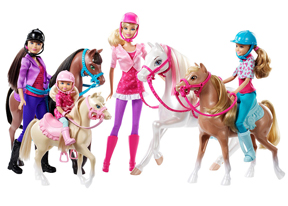 Over the years, Skipper was aged as another character, Stacie, was reintroduced, and Kelly, now the toddler, was born. Now the family around Barbie appears to be Skipper, Stacie, and Chelsea (who replaced Kelly in 2010, but is also a blonde and about the same age). Skipper was never as popular as her older sister, and that showed when Mattel discontinued the doll for seven years in 2003. Perhaps this was because Skipper was intended to be everything Barbie was not, and that didn’t have a lot of appeal to consumers.
Over the years, Skipper was aged as another character, Stacie, was reintroduced, and Kelly, now the toddler, was born. Now the family around Barbie appears to be Skipper, Stacie, and Chelsea (who replaced Kelly in 2010, but is also a blonde and about the same age). Skipper was never as popular as her older sister, and that showed when Mattel discontinued the doll for seven years in 2003. Perhaps this was because Skipper was intended to be everything Barbie was not, and that didn’t have a lot of appeal to consumers.
However, the whole family came back and appears in Barbie: Life in the Dreamhouse, an animated web series that debuted two years ago, and is now in its sixth season. Bringing Skipper back was a way to make Barbie more marketable, as having her whole family on-hand helped kids to connect with the brand in a different way. In addition, a lot of Barbie products are sold with all or a few of the sisters in one package, which like the Frozen sisters, helps combat the rivalry and gives kids a way to connect with all of the facets of the brand instead of just the main doll.
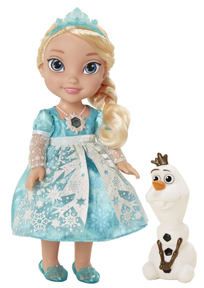 Toy companies just want to create products and stories that kids and adults alike can relate to, so they’re playing on the most personal thing we all know: familial relationships. When I took my little cousins out to see Frozen in theatres, I couldn’t help but compare the sisters’ relationship to the one that my older sister and I have (Coincidentally, Elsa has the personality of my sister and Anna is more like me). To be completely honest, if I was younger, I would totally want Anna gear over Elsa products, because I’d naturally associate with the former over the latter. Kids want products that they can relate to, and can make a much stronger connection with sibling characters instead of just friendships. Companies are marketing that and consumers are finding those relationships more appealing.
Toy companies just want to create products and stories that kids and adults alike can relate to, so they’re playing on the most personal thing we all know: familial relationships. When I took my little cousins out to see Frozen in theatres, I couldn’t help but compare the sisters’ relationship to the one that my older sister and I have (Coincidentally, Elsa has the personality of my sister and Anna is more like me). To be completely honest, if I was younger, I would totally want Anna gear over Elsa products, because I’d naturally associate with the former over the latter. Kids want products that they can relate to, and can make a much stronger connection with sibling characters instead of just friendships. Companies are marketing that and consumers are finding those relationships more appealing.
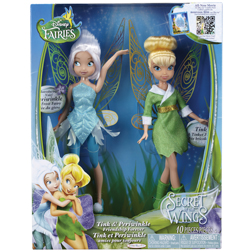 This is not to say that all toy siblings develop into a real-life rivalry. For example, in the Disney Fairies universe, Tinkerbell recently received a sister, Periwinkle, but their relationship lacks such an intense and severe dichotomy of preferences among kids. This is probably what Disney was trying to achieve with Frozen, but instead was blindsided by the public’s overwhelming preference of one sister over the other.
This is not to say that all toy siblings develop into a real-life rivalry. For example, in the Disney Fairies universe, Tinkerbell recently received a sister, Periwinkle, but their relationship lacks such an intense and severe dichotomy of preferences among kids. This is probably what Disney was trying to achieve with Frozen, but instead was blindsided by the public’s overwhelming preference of one sister over the other.
The same goes for one of the hottest brands of the year, Teenage Mutant Ninja Turtles. The four goofy and totally bodacious characters cause havoc, but the “brothers” are so diverse and have such complementary personalities that kids love them all equally (at least, as far as I am aware).
Sometimes, it is just happenstance that one toy sibling dominates another. Or there are other factors at play, such as product trends, what is going on in the pop culture landscape during the time, packaging, marketing, etc. Companies don’t create brands with the intention of one character doing better over another (Because toy companies are essentially parents who think each of their children is special in their own way, and want all of them to do well). But when it comes to characters in books, movies, TV shows, and yes, even toys, it is the natural, human response to connect with one over another—to have a favorite, in other words.
Ultimately, this shows that we have a more personal connection with toys than we sometimes would like to admit.
For more commentary from Magdalene, check back often. Views expressed in this column are solely those of the author and do not necessarily reflect the views of The Toy Book as a whole. We hope that you will share your comments and feedback below. Until next time!

